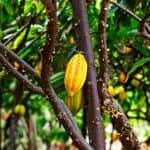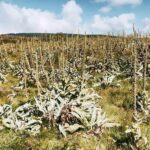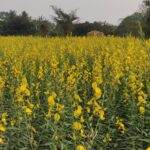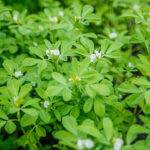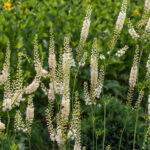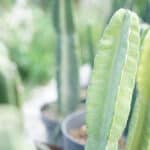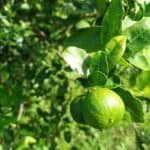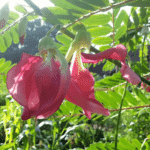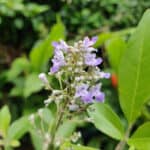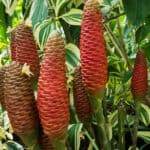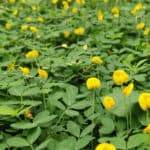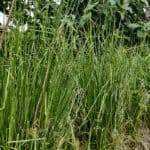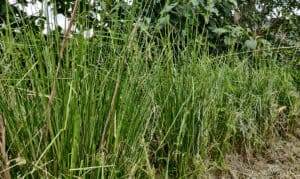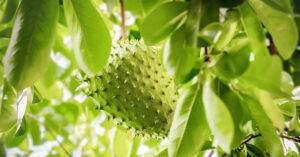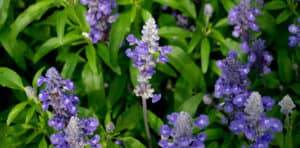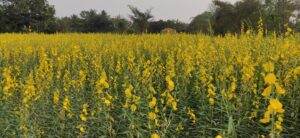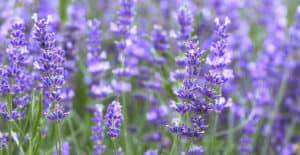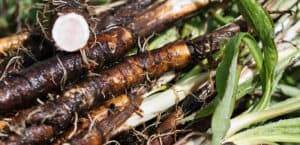Growing Larger Cardamom, the Traditional Way

When we hear the word cardamom, what comes to mind is the aromatic and flavourful common green cardamom added to different sweet dishes and masala chai, especially if you are a fan of Indian and Asian food.
Well, did you know that this is the more widely used small cardamom, one of the most highly prized spices which goes by the name ‘queen of spices’; however, there’s another larger cardamom known as Black Cardamom! If not, let’s introduce you to this other larger variety of cardamom.
Cardamom, also known as cardamon, is a whole spice, a capsule which is used as whole or only seeds depending on the cuisine or recipes that comes from 2 plants of the Zingiberaceae family, Elettaria cardamomum and Amomum subulatum.
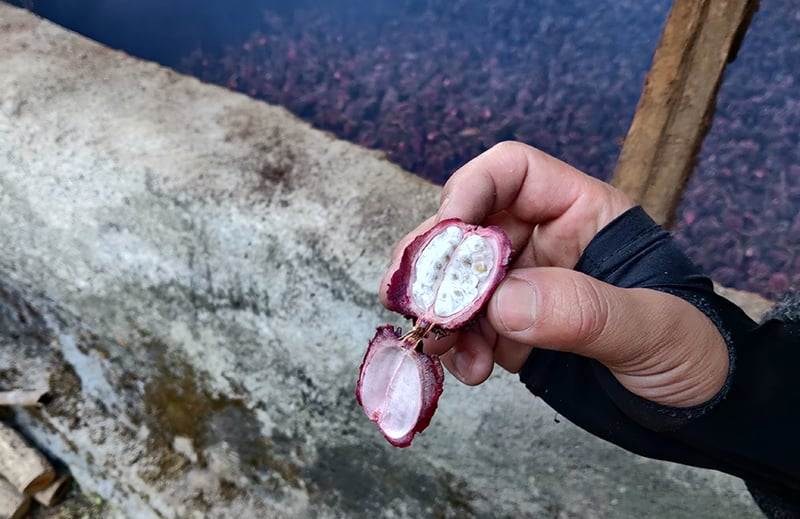
This article is dedicated to Amomum Subulatum, also known as Bengal Cardamom, Hill Cardamom, Black Cardamom, Kala Elaichi, Bara Elaichi in Hindi, Urdu, Punjabi and Bengali, Perelam in Malayalam. It is a native of the slopes of the Himalayas, majorly cultivated in Nepal, Bhutan, Indonesia and the North Eastern states of India. It is one of the oldest and most widely used as a spice in various preparations, food essences, perfumes, and medicinal applications.
What makes them different and unique?

The major difference being Elettaria Cardamom is small and green (on the right) as compared to Amomum Cardamom which is larger and brown or black in colour (on the left) with larger seeds and thicker wrinkly skin on the outside. While green cardamom has a strong taste and flavour, the larger one has even more distinct properties and aroma of its own, it’s even smokey if processed the traditional way.
My inclination towards writing about the larger cardamom comes from the time that I have spent with local communities in North Eastern regions of India and the northern regions of Kalimpong and Darjeeling districts of West Bengal in India where I got to experience the farming, harvesting, processing and preservation of this amazingly strong spice, it’s importance in local economies and livelihood.
It goes mostly into masalas and curry pastes as well as a lot of rice flavouring preparations and meat-based recipes.

It is a perennial plant belonging to the same family as that ginger, the leaf structure is similar to that of ginger or turmeric. The plant grows up to 8 to 12 ft tall based on variety.
The plant has a tall red stem with evergreen glossy and slim long leaves. The flowers start appearing from the month of April onwards, they are yellow or white and the base is reddish brown in colour.
The fruit grows from a cluster at the base of the plant called spikes which are harvested once matured to extract the cardamom capsules.
Why does black cardamom prefer only certain regions to grow?
This bigger cardamom needs hot humid and shady tropical rainforest-like conditions with a combination of well-draining, humus-rich, marshy and loamy soils with a slightly acidic ph. It thrives on the forest floors, below the canopy.
Thus, it can be found growing with minimal commercial fertilizers based dependency near the hilly regions of the above-mentioned regions at an altitude ranging from 2000 to 5000 feet above sea level with a rainfall of 3000-3500 mm per annum.

Pollination is usually done by bumble bees and other wild bees thus the tropical evergreen forest becomes an ideal location for the plant to thrive and help obtain a yield.
Growing and Caring for Larger Cardamom in Cultivated Ecologies
The plant thrives in partial shade (50%) and thus becomes an amazing one to include in shady spots of your garden or farm which has the necessary tropical microclimate.
This microclimate can be achieved by planting nitrogen fixing chop and drop species which can supply nitrogen to the soil, heavy mulching, and moist soils with preferably water bodies around which can regulate the relative humidity of the selected spot.
Another easy-to-remember tip is that this cardamom prefers a location which is at the lower and warmer altitude of the coldest zone and the top most coldest altitude of the warmer zones.
If you can manage to replicate a similar microclimate in a pot, you might as well try growing this plant indoors.
It’s a great perennial ground cover and companion to include in cultivated ecologies. The root structure is good for preventing soil erosion.
These stacking functions are a great addon as another layer of productivity to your food forest or backyard.
It also helps attract pollinators and the aromatic yield adds another interesting flavour to your harvest and food!
Cardamom is cared for slowly and steadily. Once planted this perennial crop doesn’t need much maintenance apart from periodically weeding around the base. It becomes important to clear the weeds near the base of the plant when it is flowering to ensure that the flowers are exposed to the pollinators.
Edible plants like tree tomatoes and other local trees are planted along the fields for shade, they also act as fodder and timber for the indigenous community.
The firewood becomes important during the winters and these shade-providing trees come in handy for the harvest period as well when a lot of firewood is required for smoking and drying the harvest.
Some simple tips for caring are, not too much sun, moderate shade, enough humidity and not too cold, dry and chilly. Also, moisture and more moisture!
Propagating Black Cardamom
Locally the plants are propagated from suckers as it is easier and the new plants are true to the selected species.
In Sikkim, Darjeeling, Kalimpong and India Bhutan bordering villages, propagation is through suckers unless there’s some major infection in which case a different variety is chosen which is grown from the seeds however is not preferred.
Propagation from seeds:
The seeds from mature and high yielding cardamoms are collected. They are de-husked and washed properly to remove the skin and dried with little ash. In India, they are sowed in the month of October. A raised bed is created by choosing nutrient-rich and organic matter-rich soil along with cow dung manure from local cattle. The seeds are sown in a line and the space around is mulched with dry grass or hay. It usually takes around 25-30 for germination, once the sapling grows 3 to 4 leaves, it’s transferred to newly made beds or nursery bags. They are maintained in shade for around 6 to 10 months until they become suitable for planting.
Propagation from suckers:
Propagation from suckers is similar to that of how the majority of the rhizome-based plants are propagated, that is separating the sucker with roots and growing them into individual plants placed at distances ranging from 2 to 3 ft apart.
The plant starts giving a little produce after 2 years, however in the 3rd year and onwards the yield goes up.
Propagation Tip: Always select seeds or suckers from high-yielding and disease-free plants.
Harvesting Cardamom; Beginning from the valley, up toward the top
The harvest period starts in August and extends up to November depending on where you are located and how the climate has been throughout the year.
Cardamom is planted along the slopes and the ones at the lower altitudes mature first, slowly moving up the slope as the valleys are slightly more humid and warmer as compared to the cold hills.

An indicator of the right time for harvest is when the top of the capsules turn brownish and they need to be harvested right when they are ready and before they dry and split up.

The spikes are harvested from the bottom of the plant using a special knife and are left to dry and mature further for 10 to 15 days.
One has to sit down and harvest the spikes as the plant is several feet high with limited space near the base and one has to be careful that the new sprouts are not damaged during the harvesting process.
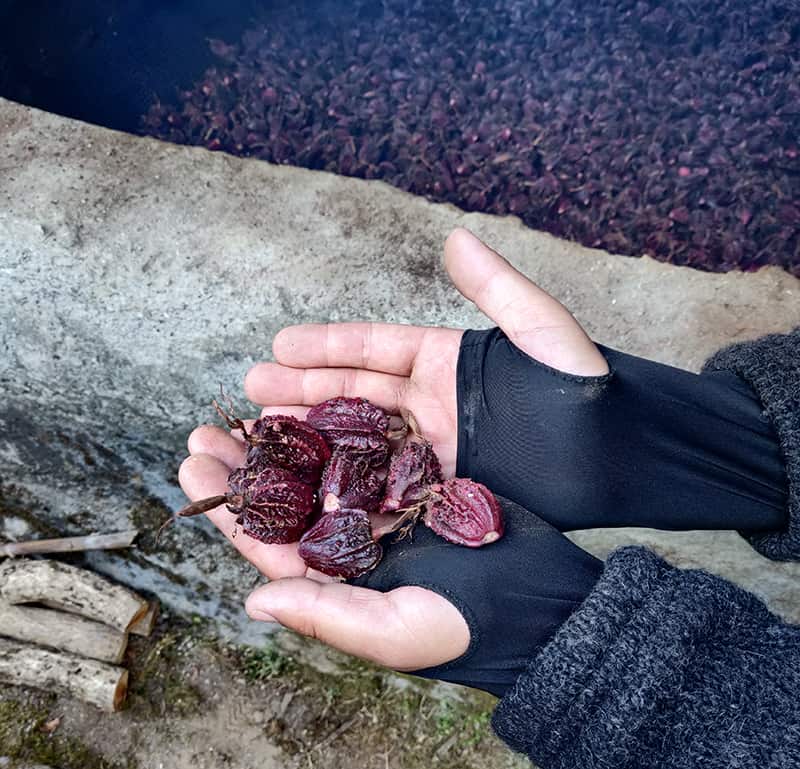
These mature cardamom capsules are full of moisture with a little hint of dryness. They are manually removed from the spikes thereafter by hand by the locals.
The entire family can be seen involved in the harvesting, it’s more like family time as everyone, from children to adults come together. An outdoor activity, along the slope, leads to physical moments and a fair share of the workload amongst the community.
Further, they are smoked on a large Bhatti which is a furnace-based curing structure made locally using stones, clay and a mesh on top that acts as a tray to hold the cardamom and to help the smoke pass through them, drying them slowly. It is cheap to build this traditional Bhatti as compared to setting up advanced dehydration units.

The aim of heating and smoking is to reduce the moisture content of the spice for storage, the process needs to be well monitored as a lot of heat can lead to excessive loss of volatile components and burning the harvest and too less of it can lead to the formation of mould.

It takes around 26 to 36 hours to dry one batch in the Bhatti. Once smoke-dried, the cardamom is ready for use, storage and delivery. The cardamom then moves from growers to collectors, traders and exporters where it is either sold as a whole spice or processed further for extraction of essential oils and more.
At home or farm, one can dry the capsules in a dehydrator to reduce the moisture content to 10 – 12 and store them further or use them to extract essential oils.
Try including this flavor bomb in your recipes and for your health!
In India and across the middle east, black cardamom is used in various preparations, especially as part of dry spice powder used for seasoning meat, veggies, and flavoring broths.
You can add one large cardamom to your broth, and it will add additional flavor and aroma. It has a smoky flavor and can be used by vegetarians who want to add a hint of smokiness to their recipes.
In Sikkim and along the Indo-Bhutan border regions, black cardamom is believed to be one of the oldest spices and thus its application in day-to-day life and local medicine.
Dried cardamom is consumed locally for treating cough, cold and sore throat. The powder is included in tea for regular intake as well to relieve the symptoms of common respiratory problems.
The pulp and seeds are excellent mouth fresheners, and the aroma helps treat bad breath problems.
It’s rich in vitamin C, and the anti-bacterial and antioxidant properties are good for hair, skin, gut and overall immunity. Thus it is included in Indian spice blends in smaller proportions, always to ensure regular intake for better protection against foreign pathogens.
The oils extracted have therapeutic values and are also used to soothe pains in the form of external applications around affected areas.
Closing Thoughts and Way Forward
The local economies depend on cardamom production as it is one of the cash crops which can be grown in the hills without catering to soil erosion, where farming is already a tough task due to the steep slopes and wildlife with very limited options for earning money.
Despite this, the locals have been self-sufficient for years in terms of managing local resources and practising their skills of living in peace and harmony with the biodiversity-rich forests around them.
Even when it comes to growing a high-value, low-volume cash crop as such which demands access to forest lands and water, they have been mindful of the techniques.
Also, the traditional intake of the larger cardamom has always been limited and regulated, this can be studied and followed as a guideline to value this plant as a resource and use it mindfully to ensure safety and sustainability without pushing it down towards a competitive farming-based way of living.
When planning about including cardamom in cultivated ecologies and including it in diet, this local traditional wisdom comes in handy to map out the needs and yields of this variety to grow it in a mindful manner.
So next time you are looking for a tropical partial-shade-loving plant, do consider this flavour bomb and carry forward this traditional wisdom!


